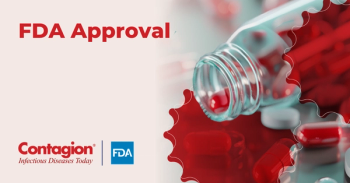
Self-Tests Increase Awareness of HIV Infections Among MSM
Distributing free HIV self-tests to men who have sex with men resulted in a sharp increase in the number of infections identified, a new study by the CDC.
Distributing HIV self-tests free of charge increases testing and diagnosis of the infection among men who have sex with men (MSM), a new study by the US Centers for Disease Control and Prevention (CDC) found.
The 12-month randomized clinical trial, published in
“Self-testing is an important option for some people and in some situations—it saves time, offers privacy, and reaches people who may not be able to or willing to access existing testing services,” study author Capt. Robin MacGowan, MPH, research officer in CDC’s Division of HIV/AIDS Prevention, told Contagion®. “Our study found that gay and bisexual men who have never been tested will use HIV self-tests provided via the internet at no cost.”
The study, called Evaluation of Rapid HIV Self-testing Among MSM Project (eSTAMP), examined the effects of mailing HIV self-tests to MSM in the United States.
Participants in the self-test arm received 2 oral fluid HIV self-tests and 2 fingerstick whole blood HIV self-tests and could order replacement tests every quarter after completing a survey.
Throughout the trial, 25 newly identified infections were reported in the self-test group and 11 in the control group. The difference was greater early on, with HIV infections identified in 12 participants in the self-test group and 2 in the control group within the first 3 months.
Additionally, some participants shared the self-tests, resulting in 34 infections being identified among participants’ social networks.
“More than 16% of the participants in our study had never been tested for HIV before enrolling in the study,” MacGowan told Contagion®. “At the end of the 12-month trial, our analysis found that only 4% of those who received HIV self-tests and responded to a follow-up survey had not been tested, and that gay and bisexual men who received the free HIV-self-tests were more likely to take an HIV test at least 3 times during the trial when compared to control participants.”
In addition to identifying more than twice as many infections among the self-test group, about half of those infections were among men who had not been tested in the prior year and almost a quarter were among men who had never been tested.
During the study, a total of 8654 self-tests were mailed to participants in the self-test arm. They reported using 4501 of the tests and giving 2864 to other people in their social networks.
“We were interested to find that 34 social network members became aware of their HIV infection from using a study self-test that a participant shared with them,” MacGowan told Contagion®. “This was especially interesting because we did not encourage participants to share the tests with friends, family members, or other people in their social networks (though they were not discouraged from doing so).”
CDC recommends screening asymptomatic MSM at least annually. HIV self-tests can detect infection if used 3 months after exposure. Clinicians can offer guidance to patients after they take a self-test and discuss options for re-testing and reducing risk for those whose self-test results are negative less than 3 months after a possible risk event, MacGowan said.
“Getting an HIV test has never been quicker or easier than it is today. Yet, approximately 14% of people living with HIV in America don’t know they have it,” MacGowan told Contagion®. “An HIV test can be a critical gateway to protecting the health of people with HIV and stopping new HIV infections. A positive HIV test can be a catalyst to linking people with HIV to care and treatment, which can protect their health and is key to preventing transmission of HIV. Even a negative HIV test can create an opportunity for providers to link people to powerful prevention tools like pre-exposure prophylaxis (PrEP) — a daily pill to prevent acquisition of HIV.”
Based on the study findings, health departments and HIV prevention programs may consider distributing HIV self-tests, and future analysis of the study data could include cost analysis.
Boosting the number of people who are tested for HIV is a focus of efforts to control the disease.
A
Additionally, a study published earlier this year found that 78.5% of participants preferred accessing
Newsletter
Stay ahead of emerging infectious disease threats with expert insights and breaking research. Subscribe now to get updates delivered straight to your inbox.




















































































































































































































































































